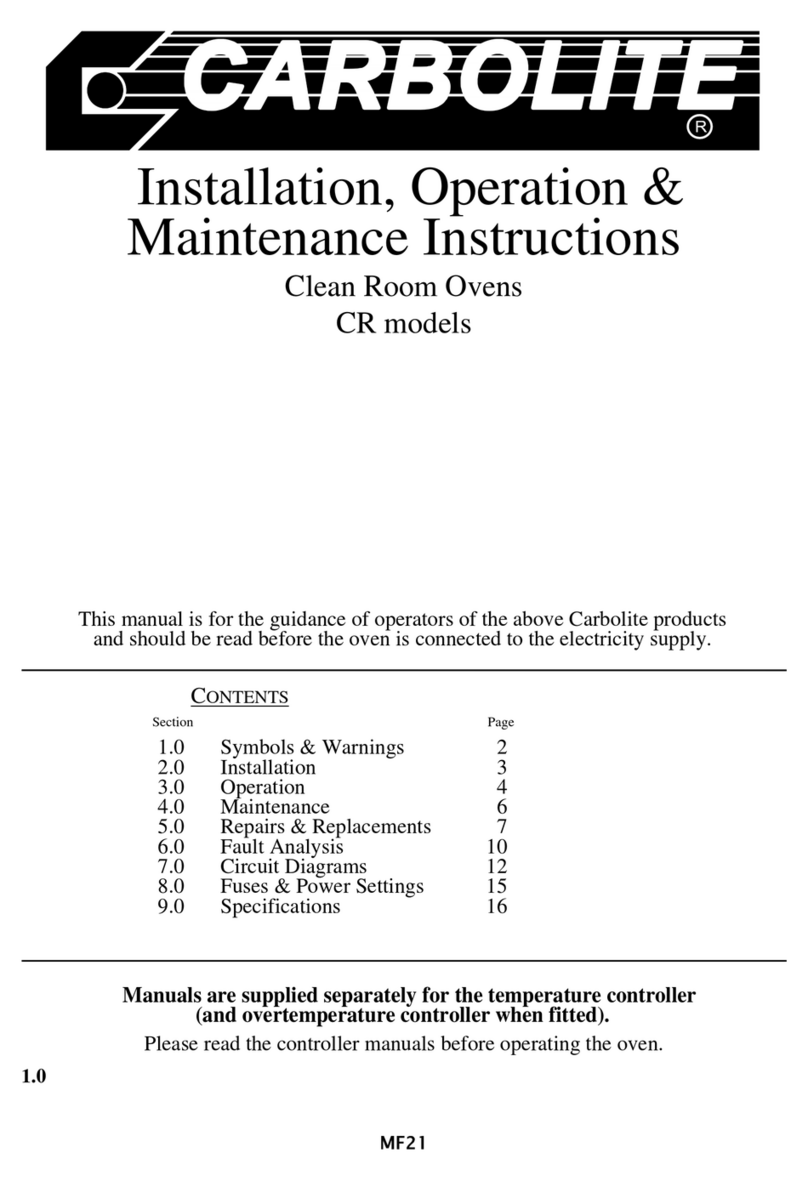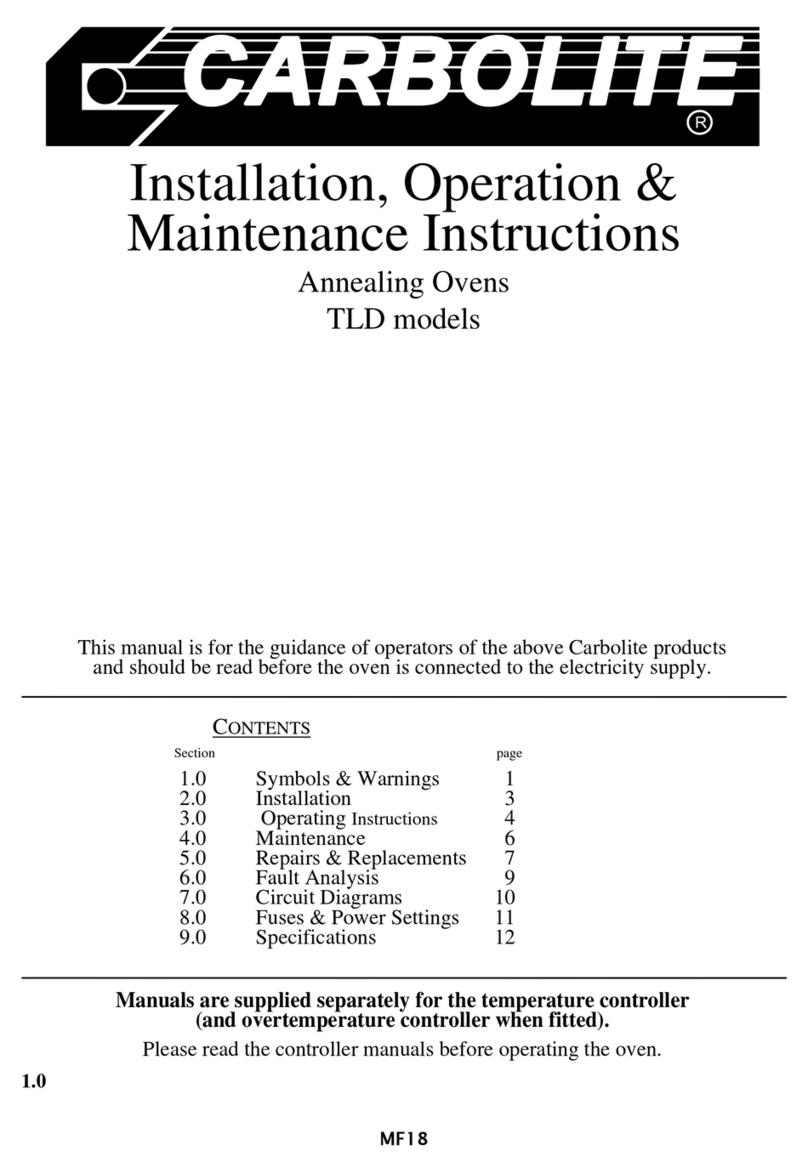High Temperature Ovens
5.0 REPAIRS & REPLACEMENTS
5.1 Safety Warning – Disconnection from Supply
Always ensure that the oven is disconnected from the supply before repair work is
carried out.
5.2 Safety Warning - Refractory Fibrous Insulation
This oven contains refractory fibres in its thermal insulation. These materials may be
in the form of fibre blanket or felt, vacuum formed board or shapes, mineral wool
slab or loose fill fibre.
Normal use of the oven does not result in any significant level of airborne dust from these
materials, but much higher levels may be encountered during maintenance or repair.
Whilst there is no evidence of any long term health hazards, we strongly recommend that safety
precautions are taken whenever the materials are handled.
Exposure to dust from fibre which has been used at high temperatures may cause
respiratory disease.
When handling fibre always use an approved mask, eye protection, gloves and long
sleeved clothing.
Avoid breaking up waste material. Dispose of waste fibre in sealed containers.
After handling rinse exposed skin with water before washing gently with soap (not
detergent). Wash work clothing separately.
Before commencing any major repairs we recommend reference to the European Ceramic Fibre
Industry Association Bulletin No. 11 and the UK Health and Safety Executive Guidance Note
EH46.
We can provide further information on request. Alternatively our service division can quote for
any repairs to be carried out at your premises or ours.
5.3 Panel Removal
Disconnect the oven from the electrical supply.
Control panel - LHT Models. Open the door and remove two screws located in recesses on the left
side of the control panel (these screws are covered with plastic caps). Lift the panel, pull forward
the bottom of the panel, and lower the panel to disengage it from the top of the body. Note that the
panel remains connected by wiring. Do not disconnect any wiring without first making a careful
note of all the connections.
Control panel - HT models. Remove the screws holding the panel. Note that the panel remains
connected by wiring. Do not disconnect any wiring without first making a careful note of all the
connections.
Internal Element Cover. Open the door. Remove any screws holding the panel and any clips
holding thermocouples in position. Remove the cover.
5.4 Temperature Controller Replacement
200 & 201. These controllers are fitted to the back of the control panel, which can be removed as
given above.
Before handling the controller: wear an anti-static wrist strap or otherwise avoid any possibility
of damage to the unit by static electricity.
Refer to the instructions supplied with the replacement controller.
2132, 2416, 2408 etc. Ease apart the two lugs at the side; grip the instrument and withdraw it from
its sleeve; push in the replacement.
8 MF16





























